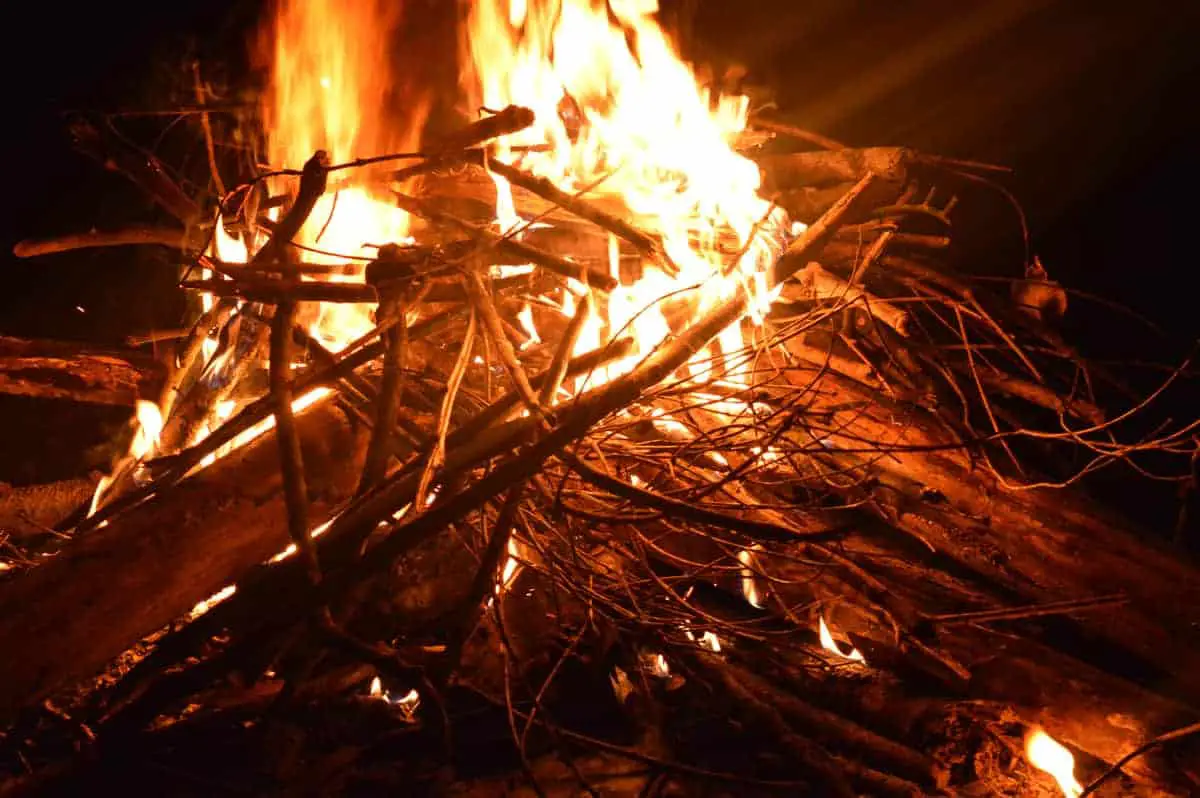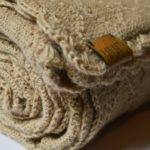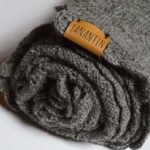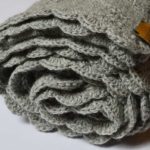You may have heard that alpaca wool has many exclusive qualities. But did you ever hear that alpaca wool is fire-resistant?
acrogenously Alpaca wool naturally has a great degree of flame resistance. It is slow to ignite, has self-extinguishing capabilities and low heat release. Compared to synthetic fibers it doesn’t melt, but chars, leaving no hazardous fumes. However, alpaca wool is NOT 100% fireproof.
Fire resistance is especially important when it comes to fabrics. This is because they can cause injury to the wearer. With more and more synthetic fabrics being used in the (fast) fashion industry, it is worth considering safer options.
- http://shinyfastandloud.com/?p=627 WARNING: This article is for informational purposes only. Do not test whether or not alpaca wool or any other fabric is flammable or not. Playing with fire is dangerous and should be avoided at all times.
Fire Resistant Is NOT Fireproof!
Everything will burn if you get it hot enough, and the same goes for alpaca.
Everything will eventually burn, melt or evaporate. Anything exposed to a temperature high enough, or to a certain heat long enough will need to face the consequences.
If something is fireproof or fire-resistant, it talks about the different degrees of resisting fire or high temperatures.
| Feature | Meaning | Alpaca Wool |
|---|---|---|
| Fireproof | Able to withstand fire | |
| Fume hazard | The potential damage of smoke and toxic release |  |
| Fire resistant | A degree of resistance to fire |  |
| Flame-retardant | Slows down the spread of fire |  |
| Slow to ignite | Time it takes to set something afire |  |
| Self-extinguishing | The ability to cease burning once the source of heat has been removed |  |
| Low heat-release / Flammability | Fire spread rate and burn severity |  |
| Doesn’t melt | The reaction after catching fire: melting |
What Happens When Alpaca Wool Catches Fire?
When alpaca wool or yarn catches fire, there will always be a similar reaction:
- wool slowly ignites
- wool sizzles and curls away from the flame
- flames cause dark smoke and moderate fume
- gives out a strong odor
- wool self-extinguishes once flame is removed
- burnt parts become brittle and dark
- burnt wool leaves harsh ash
The so-praised aspect of alpaca wool is that it is much more fire-resistant than other fabrics.
- Go to Fabric Mart for a nice overview of the burning process of different types of fibers!
Now, let’s see why it is that alpaca wool has natural fire-resistant features:
1. The Structure of the Fiber
Alpaca wool has a special fiber with a scale-like texture. Thanks to it’s scale-like texture, not only water and smells are repelled quickly and easily, but also flames when alpaca wool is exposed to high heat.
According to Herculite, wool in general burns slower than many other type of fabrics because of the fiber structure. Alpaca wool specifically burns even slower than wool because of its superior fiber texture.
A study called “Flammability Characteristics of Animal Fibers: Single Breed Wools, Alpaca/Wool, and Llama/Wool Blends, done by Galaska, Mary & Sqrow, Larry & Wolf, J & Morgan, Alexander in 2019, shows that alpaca wool has high sulfur content.
Without getting into too many technical details, this means that it causes lower heat release and higher char yielding.
- Lower heat release means that it has lower flammability.
- Higher char yielding (more on ScienceDirect) means that it slows down the fire and has better fire resistance.
2. The Structure of the Fabric
Once a piece of clothing or fabric is set on fire, the type of fabric can influence how long it takes for something to burn.
According to Herculite, tightly woven fabrics burn slower, which means that they have a lower flammability. Especially compared to other fabrics: tight fabrics with a higher density will take longer to burn than loose fabrics like cotton or linen.
Alpaca wool is spun: this means that it is tightly twisted until there is a highly dense thread of yarn (Read more on ResearchGate). This yarn, in turn, is used for tight hand-knitting or weaving.
- Tightly knitted or woven fabrics have higher density and therefore have lower flammability, when compared to cotton.
- Between woven and knitted garments, woven garments are more dense and have lower flammability than knitted garments.
- Between alpaca wool and regular wool, alpaca wool has generally smaller fibers (a lower micron-count), which means that alpaca yarn can be turned into a denser fabric than regular wool, resulting in lower flammability.
3. Ignition Time per Material
Another important aspect of alpaca wool’s fire resistance is that it takes longer to ignite (read more on ResearchGate). Compared to wool, alpaca can be exposed to flames for more time without catching fire.
Researching this topic, I found one example of a study on Research Gate that researched the Flammability Characteristics of Animal Fibers that showed that 100% alpaca wool took (on average) 31 seconds to ignite, while a llama merino blend (50/50) took “only” 23 seconds.
Fabric Mart wrote an overview of the reaction of fibers to a burn test. You can find the article here. I’ve put the results in a table for a quick overview of their flammabillity:
| Fabric | Flammability |
|---|---|
| Linen | Slow to ignite |
| Silk | Slow to ignite |
| Wool | Slow to ignite |
| Cotton | Medium quick to ignite |
| Hemp | Quick to ignite |
| Jute | Quick to ignite |
| Acetate | Quick to ignite |
| Nylon | Quick to ignite |
| Polyester | Quick to ignite |
| Acrylic | Quick to ignite |
4. Self-Extinguishing Properties
When alpaca wool catches fire, it is most likely to self-extinguish (read more on ResearchGate) before much damage can be done.
This, again, has to do with the structure of the fiber and the high density of the yarn. These aspects contribute to lower flammability and a slower burn, and thus to being more flame retardant.
On top of that, alpaca wool is self-extinguishing, which means that once it does catch fire, it won’t burn for long.
Thanks to the fiber texture, alpaca wool will also not melt on your skin. Fabrics that melt can be extremely dangerous as the melted material can be extremely hot and cause dangerous drips that can cause much more damage to the wearer.
Does Alpaca Wool NEVER Burn?
Alpaca wool, while being flame retardant, is not fireproof.
BEWARE: Eventually, any type of fiber will catch fire, including alpaca wool.
What Does it Mean that Alpaca Wool is Flame-Resistant?
Being flame-resistant means that if you accidentally pass too close to a candle, an alpaca woolen piece will not immediately be eaten by flames. If you accidentally drop a match on it, it will not set you on fire.
The fact that alpaca wool does not melt and does self-extinguish once the flame is removed also makes alpaca wool safer to wear, compared to synthetic fibers. The melted bead and drip of synthetic fibers can damage the skin because of their high heat.
It is also a very nice trick to see if alpaca wool is real.
Sometimes, shop owners (especially in South America) will sell you something for the price of 100% alpaca wool, without it actually being 100% alpaca wool. If you firmly suggest lighting a match to see if the fabric will distinguish the flame upon contact, you might find yourself an honest answer.
NOTE: I don’t think shop owners will appreciate you trying this in their store, but you can probably guess by the looks on their faces whether they are selling real alpaca or not 🙂
If you want to read about other ways to find out if alpaca wool is real or not, you can read my article on Different Ways To Recognize Real Alpaca Wool.
When Are Flame-Retardant Materials Useful?
Alpaca wool being flame resistant is a nice feature. But let’s be honest, will you determine to yay or nay your next purchase on its capability to slowly ignite? Maybe, here are some more practical applications:
1. You Can Use Alpaca Fiber as Insulation for Your Home
It is interesting to think of other options that may not necessarily apply to your wardrobe, but that do include alpaca fiber. Think of blankets or furniture, or even bigger: home insulation!
Being fire retardant is definitely a plus for choosing alpaca insulation for your home!
The alpaca fiber is an increasingly used alternative for wrapping your house! It is seen (and used) as a green, sustainable and environmentally friendly alternative for home insulation (read more on Wild Hair Press).
2. You Can Use Alpaca Wool When At a Campfire!
Probably the most practical way of applying the flame-retardant features of alpaca wool is during a campfire.
When sitting close to a crispy fire, you might worry about accidentally catching a flame when you’re roasting your marshmellows!
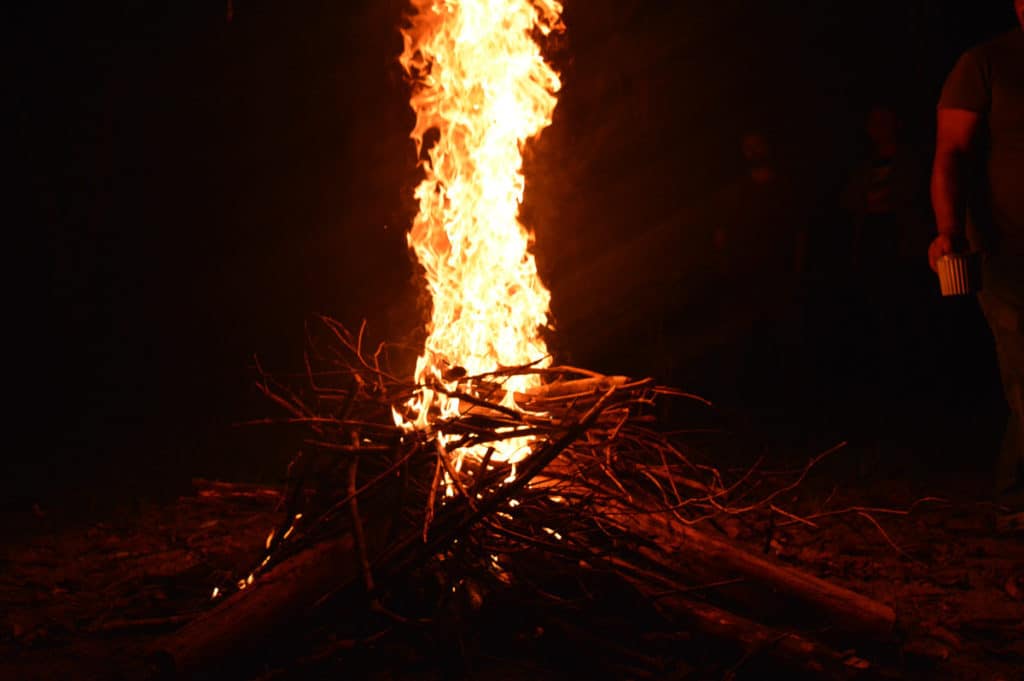
Luckily, when wearing alpaca wool, simply retreating the garment from the fire,should prevent a lot of damage done by the flames!
3. You Can Use Alpaca Wool for Your Baby
Another example of when you want to make sure the wearer is safe from any dangers, is when you use alpaca wool for your baby.
Using fabrics that are flame-retardant can decrease some potential dangers for your little one.
And, because of alpaca wool being naturally flame-retardant, you don’t have to be afraid of chemical materials!
Does Alpaca Wool Need Finishes to Become Fire-Resistant?
An interesting remark (and credits for the alpaca!) is that all these capabilities that lead to low flammability, flame retardance, and self-extinguishing, are all-natural! The alpaca fiber comes this way without any treatment.
Treated fibers (more on ModelApparel), on the other hand, are flame resistant because they have been treated to become so. During its fabrication process, a chemical is added that makes them flame-resistant. This process can be highly chemical and therefore potentially harm the environment.
Different Blends Mean Different Results
Keep in mind that this article talks about garments, items, and fabrics that are made of 100% alpaca yarn. Only when 100% pure, unblended alpaca fiber is used, a fabric benefits the low flammability of the wool.
Nowadays, many fabrics use synthetic or other wool blends to lower cost or to avoid potential downsides of alpaca wool. Keep in mind that most (if not all) synthetic fibers and fabrics are highly flammable.


